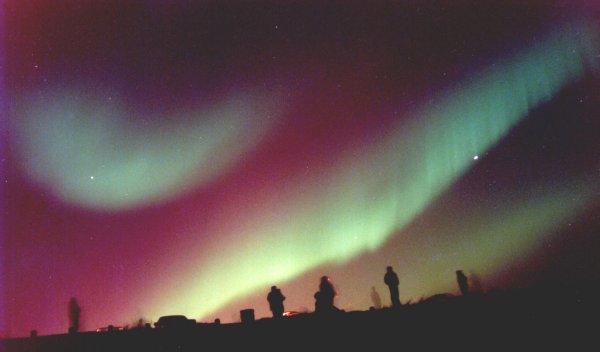
Aurora
Borealis:
The Northern Lights
Living in Alaska, or any other part of the Arctic for that matter, provides us with the opportunity to see so many exciting things. Whether it be a moose walking across the front yard, a bald eagle circling our home, or the things that happen at 50 degrees below zero, one of the most amazing is at night when the sky is filled with dancing, racing displays of the aurora borealis.
It seems that everyone has their own interpretation about what causes the aurora. Some attribute supernatural phenomena to it. Some take the scientific approach and talk about solar winds passing over the causing the various gaseous elements in the atmosphere to emit light (which,by the way, is the reason why we have the aurora in the first place). No matter what you think causes it, on a cold winter's night, with the sky blazing away in greens, yellows, blues and occasionally reds, gazing into the sky leaves a person feeling so small, yet so alive.
I selected some pictures taken over the years of the aurora to share with our visitors. They provide an ever changing array of colors and shapes. Photographing the northern lights is not easy. When it is active and I happen to be around other people enjoying the show, I feel sorry for those who pull out their little "point and shoot" cameras, complete with a flash. They start snapping away thinking they are capturing the view only to find when they have the photos developed that all they got was the black night.

Scientists have determined that the aurora goes through a cycle of of approximately 11 years during which it goes from very active to less active. The degree of activity is related to sun spot activity on the sun. One night in November 1998, we were treated to one of the best displays in many years. That night we had the pleasure of seeing a red aurora which is among the rarest of auroral colors.
 |
Generally the main colors we see are greens, yellows and light blue. |
| The aurora is constantly changing as it flows across the sky. The most common shape is often described as a curtain effect. Here, the aurora forms long flowing panels that ripple and shimmer as they move. They look like a curtain viewed from the bottom looking up toward the top. | 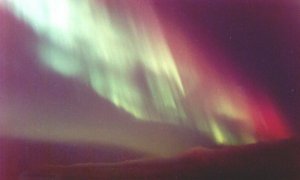 |
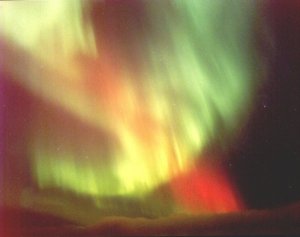 |
In November, 1998, we were treated to an unusual red aurora. Initially I was surprised to see how much color actually present that only showed up on film. Apparently photographic film is susceptible to a broader spectrum of colors than the human eye. |
| At other times, the aurora looks like long flares of color that shoot across the sky as they dance and swirl around each other. One night, in 1996, there was an interesting effect that looked like a whirlpool as the colors actually spun around the sky in a circular motion. | 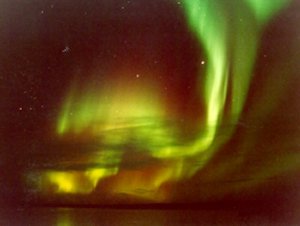 |
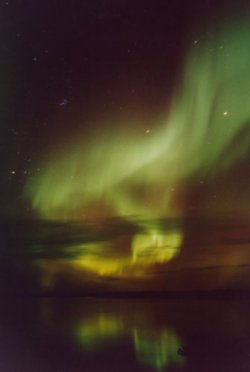 |
In this photo, the aurora creates an exciting contrast with the clouds over the Yukon. |
| In October, 1999 while on a trip to Circle, Alaska, we experienced a truly magnificent display of the northern lights. I was able to capture not only the aurora in the sky, but also it's reflection in the waters of the Yukon River. | 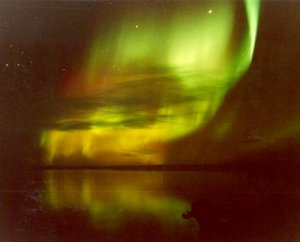 |
All photographs on this page are copyrighted ©1996, 1998, 1999 by Douglas Beckstead